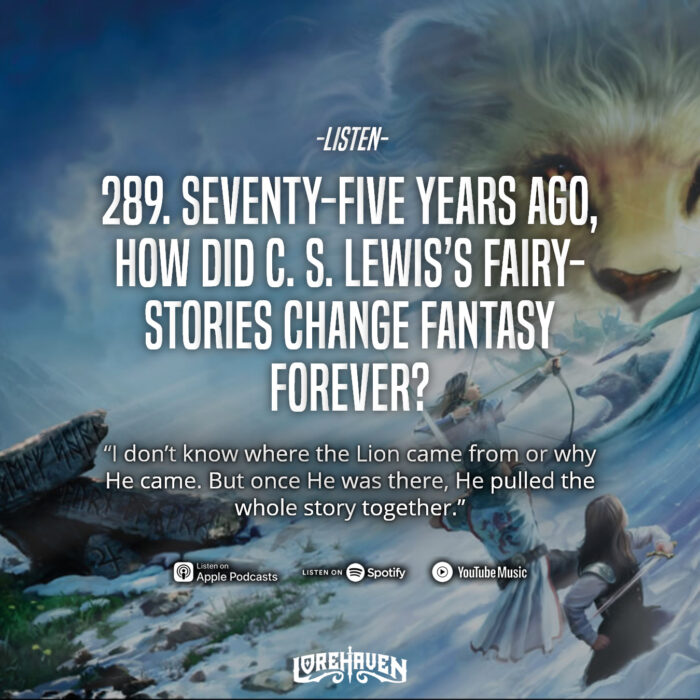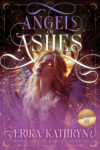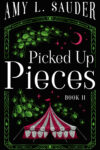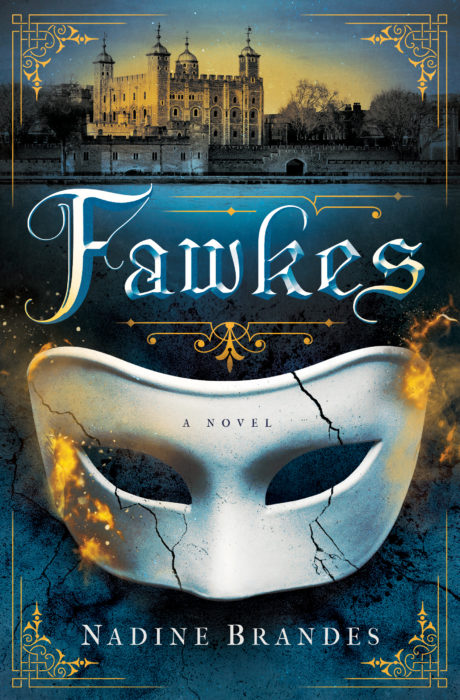Fawkes
No one will care who Thomas Fawkes is until he puts on a mask.
But in this young man’s world of alt-historical 1600s England, a mask isn’t a criminal instrument or party pretense. A mask gives you power.
If you ally with the traditionalist Keepers like Thomas, you can control elements and objects of a single color, such as brown, black, or green. Or if you ally with the radical Igniters, lately the land’s ruling party, you can control two or more colors.
Thomas only needs to guide one color—gray. Then he can help halt the stone plague that’s spreading in the land, infecting animals, people, and Thomas’s own left eye.
Unfortunately, young Thomas is stuck powerless at St. Peter’s Color School. Only his distant father, Guido or “Guy” Fawkes, can give Thomas a new mask. But as for Guy Fawkes, ‘twas his intent to blow up the king and Parliament. Then he’ll put an end to Igniter persecution, restoring Keeper rule and removing the stone plague’s curse.
To get his mask and save his life, Thomas must commit fully to the Keeper cause and the Gunpowder Plot. Unfortunately, he’s challenged by Emma, a girl who has Igniter powers and a will to fight injustice, as well as a deeper secret behind her own mask. He’s also drawn by the voice of the one color that every loyal Keeper respects but none would dare actually speak with: White Light, the omnipresent, still, small voice with “its” own agenda as well as an odd sense of quippishness.
At this, some readers may smile in satisfaction (or dismay), assuming, “Ah, here’s the simple religious allegory.” But Nadine Brandes’s story is not so black and white. In style and substance, her historical research shines, and blends surprisingly well with imagined elements like Thomas, Emma, and color magic.
Nadine Brandes wrote the dystopian Out of Time series and now creates historical fantasy novels. She and her husband are preparing for their first child.
NadineBrandes.com
@NadineBrandesExplore this novel at the Lorehaven library.
Yes, readers familiar with history can identify figures like King James and Guy Fawkes’s co-conspirators. Even Martin Luther gets a name-check. Some may also feel tempted to “decode” the Keeper and Igniter groups to historic parallels (similar to readers who declare that C. S. Lewis’s character the White Witch equals Satan). Others may question where the “allegorical” atonement or written Bible appears.
These responses, however, can overthrow the novel’s aim: to help us feel a young person’s struggle for truth in an age where colored light is mixed with darkness.
Yes, despite the presence of potentially whimsical color magic, in this world the Thames still burbles with sewage, maidservants toss waste from windows, and even sincere men can believe and die for false religion.
This is solid, creative, and “useful” fantasy. It reflects the reality where hypocrites, abusers, and power-mongers can darken every point of the belief spectrum.
Thus, young Christians may especially identify with Thomas Fawkes’s journey. This story may help them consider, rather than abandoning color magic or masks altogether, instead following the only Source who creates these gifts.
Best for: Young adult readers who love slow-burning, character-driven action, and delight in mixing (or sorting) fictional elements and real-life history.
Discern: Moral “gray areas,” such as themes of faithful rebellion versus lawful persecution; antiheroes who lay down their lives for false beliefs; and examples of historical racism (which are rebuked in-story).


































Have you read Fawkes ? Share your own review.